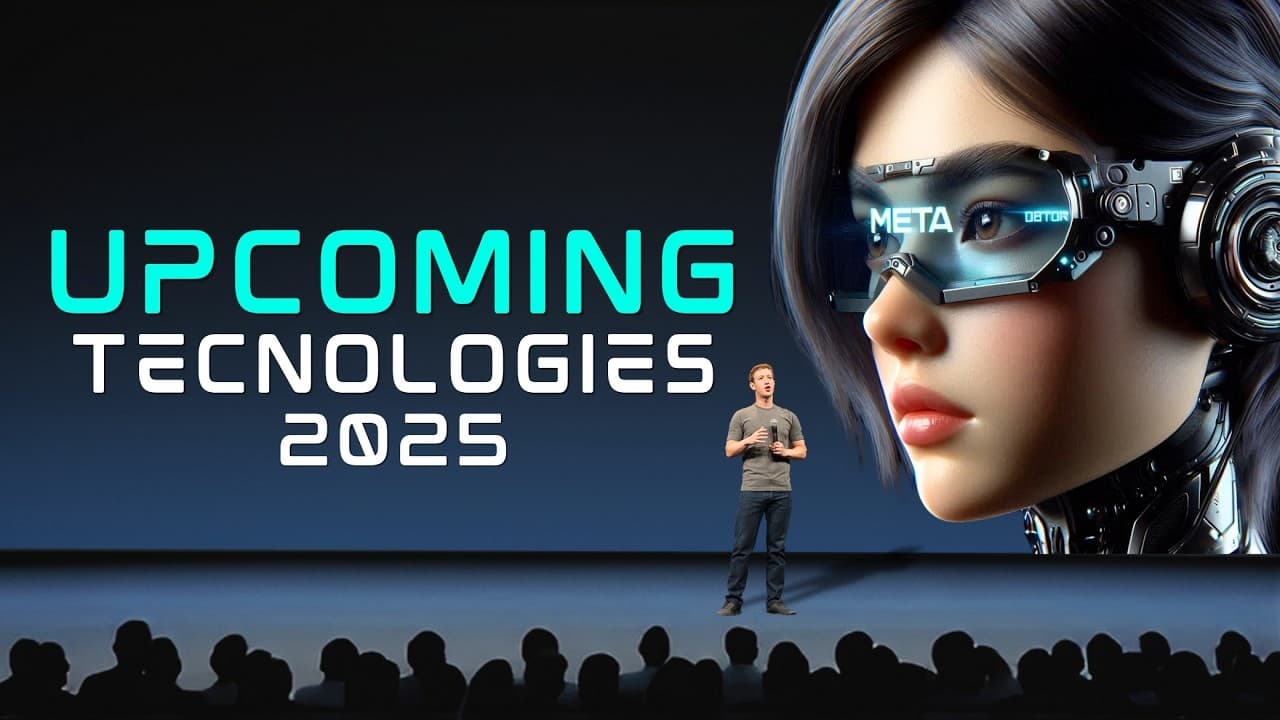Exploring the Relentless Pace of Technological Change
In a world where innovation accelerates daily, I've witnessed how technologies like AI and 5G are reshaping industries and everyday life, raising both opportunities and challenges that could redefine our future.
TL;DR
I discovered how AI and machine learning are automating decisions faster than ever, sparking concerns over jobs and bias while driving massive market growth.
Next, 5G and IoT are connecting devices in real time, promising smart cities but facing hurdles like high costs and security risks that could disrupt adoption.
Emerging trends like blockchain and quantum computing offer transformative potential for security and problem-solving, yet issues like energy use and scalability hint at future battles for dominance.
Finally, as sustainable tech and human augmentation gain traction, I'm left wondering how these innovations will balance efficiency with ethical concerns in our evolving world.

I've always been fascinated by how quickly technology evolves, and right now, it's relentless. AI is making decisions faster than humans ever could, while 5G connects billions of devices in real time, and blockchain is revolutionizing security and finance. These aren't just ideas on paper; they're already here, changing industries from healthcare to entertainment by enabling smarter, more efficient operations.
For instance, artificial intelligence and machine learning have become essential in my daily observations. In healthcare, AI personalizes treatments based on data analysis, and in finance, it detects fraud by learning from patterns, though challenges like job automation and algorithmic bias are rising. The market for AI is booming, projected to hit $190 billion by 2025, with advancements in natural language processing and predictive analytics leading the way.
Moving on, 5G technology is a game-changer that I've seen unfolding. It delivers ultra-fast internet speeds and low latency, allowing seamless connections for smart cities and autonomous vehicles, where devices communicate instantly without delays. However, issues like high infrastructure costs and regulatory hurdles have slowed its rollout in some regions, with the market expected to reach $667.95 billion by 2026 as more devices integrate.

The Internet of Things, or IoT, creates a network of connected devices like smart refrigerators and industrial sensors that exchange data to boost efficiency in healthcare and manufacturing. From my perspective, while this drives real-time insights and operational improvements, security vulnerabilities have led to a surge in cyber attacks. Despite that, the IoT market is set to grow to $1.6 trillion by 2025, making it vital for smart homes and cities.
Edge computing brings data processing closer to its source, cutting down on latency issues that cloud systems often face, which is crucial for applications like self-driving cars. I've noted how this reduces bandwidth needs for time-sensitive tasks in industrial automation, though managing these distributed networks can be complex and expensive. The market is growing rapidly, from $4 billion in 2020 to $15.7 billion by 2025, fueled by IoT expansion.
Blockchain technology, beyond cryptocurrencies, offers a secure way to record transactions, which I've explored in finance and supply chain management. For example, it verifies product origins or ensures medical record integrity by creating a transparent ledger. Yet, challenges like high energy consumption and scalability persist, with the market projected to reach $39.7 billion by 2025 if these issues are addressed.
Augmented reality and virtual reality are transforming experiences in gaming and education by overlaying digital elements on the real world or immersing users in virtual spaces. In real estate, AR enables virtual tours, but the cost of equipment remains a barrier. The AR/VR market is expected to hit $29.2 billion by 2025, driven by hardware improvements and 5G integration.

Quantum computing, though still emerging, could revolutionize fields like drug discovery with its ability to process vast possibilities simultaneously using quantum bits. I've seen the potential in cryptography, but practical use is limited by error rates and stability, with investments from companies like Google pushing the market toward $64.98 billion by 2030.
Robotic process automation streamlines repetitive tasks, such as invoice processing, allowing humans to focus on more creative work. From my view, while it boosts efficiency, upfront costs and maintenance are drawbacks, and the market is growing from $1.89 billion in 2020 to $3.74 billion by 2028, though job losses are a concern.
Cyber security is evolving with AI-driven threat detection and advanced encryption to counter sophisticated attacks, especially in finance and healthcare. I appreciate how zero-trust architectures ensure constant verification, but staying ahead of threats requires ongoing innovation, with the market reaching $248.26 billion by 2024.
Sustainable technology emphasizes green energy and recycling to reduce environmental impacts, like solar panels in manufacturing. Regulations are pushing adoption, but initial investments and infrastructure shifts pose challenges, with the market projected at $36.6 billion by 2027.
Human augmentation enhances abilities through exoskeletons for mobility or brain-computer interfaces for device control, which I've found promising in healthcare. Privacy and accessibility issues linger, yet the market could reach $298.50 billion by 2027.
AI is now augmenting software development by automating code generation, as seen with tools like GitHub Copilot, speeding up processes but risking security vulnerabilities. Industry cloud platforms tailor solutions for sectors like healthcare, improving data management while tackling security and interoperability, with the market hitting $83 billion by 2025.
Smart apps use AI for personalized experiences, such as financial advice apps, enhancing customer engagement but raising data privacy concerns, with growth to $62.4 billion by 2025. Democratized generative AI makes content creation accessible, transforming marketing, though copyright issues are emerging.
Continuous threat exposure tools monitor vulnerabilities in real time, helping organizations like those in finance stay proactive against cyber threats. AI trust, risk, and security management frameworks address biases in AI systems, ensuring fairness in healthcare diagnoses, though achieving transparency is tough.
Platform engineering streamlines software delivery by integrating cloud tools, enabling faster deployments, but it demands significant investment. Machine customers, AI systems that autonomously purchase, improve efficiency in B2B transactions, yet raise accountability issues.
Finally, the augmented connected workforce uses tools like Zoom for remote collaboration and wearables for health monitoring, boosting productivity in hybrid models. Balancing privacy with performance tracking is key, with the market forecasted at $9.3 billion by 2026.
As I reflect on these trends, they highlight how technology is not just advancing but fundamentally altering our interactions and opportunities, urging us to adapt thoughtfully.
These innovations underscore the need for ethical considerations and strategic planning to harness their full potential for a better future.
Key Takeaways
AI and machine learning are driving automation and decision-making, with markets growing rapidly despite bias concerns.
5G and IoT enhance connectivity, enabling real-time applications but facing security and infrastructure challenges.
Emerging technologies like blockchain and quantum computing promise security and efficiency, though scalability issues persist.
Sustainable and human augmentation trends promote environmental and personal advancements, balanced against ethical and investment hurdles.

